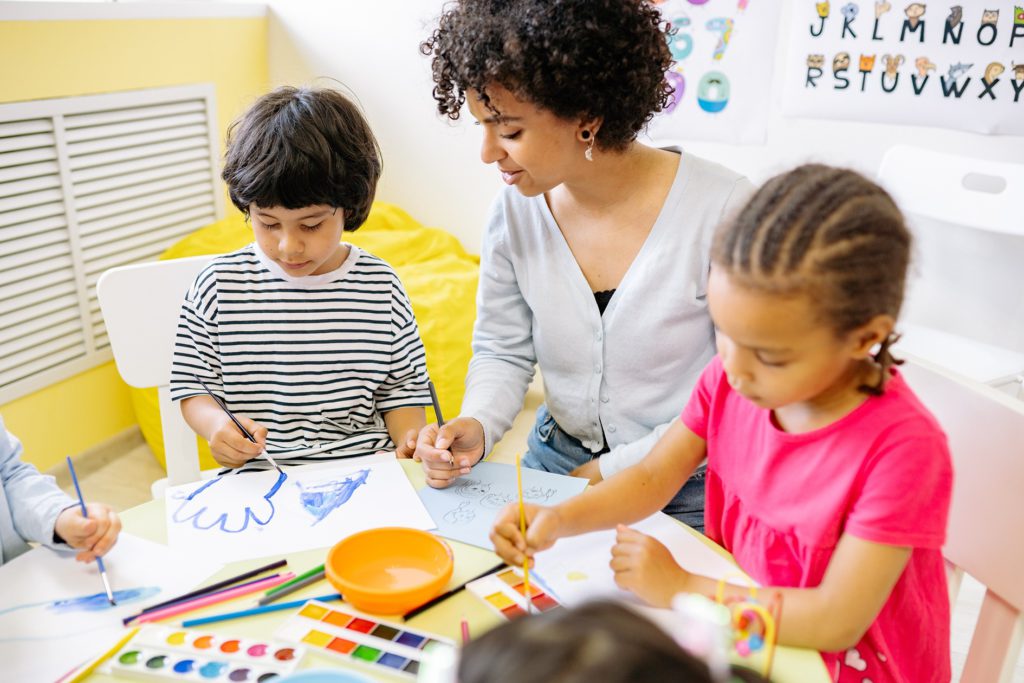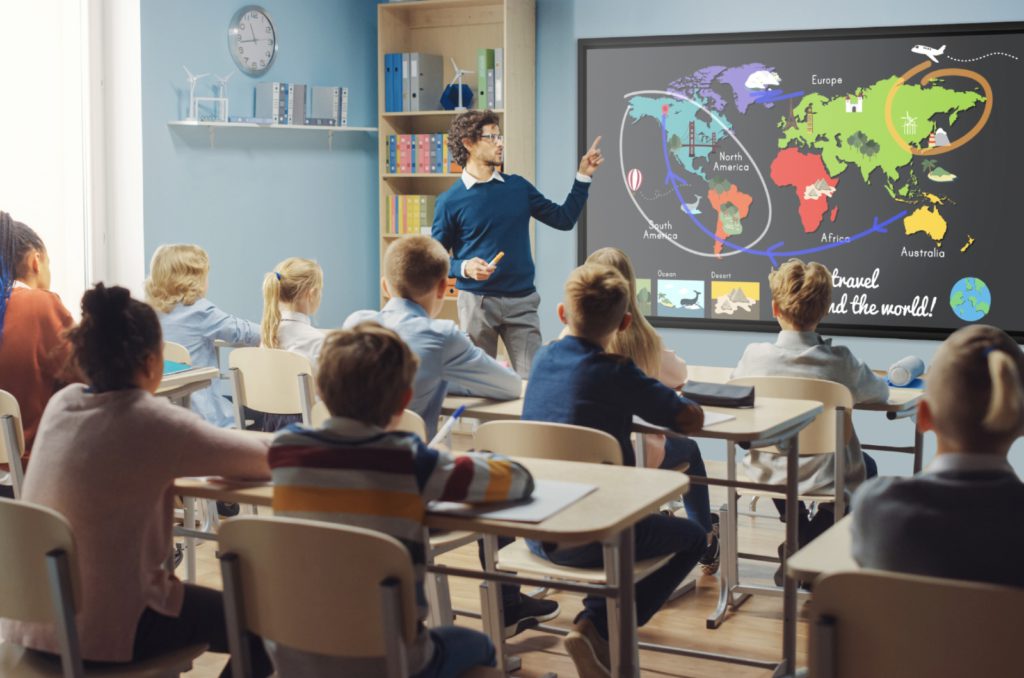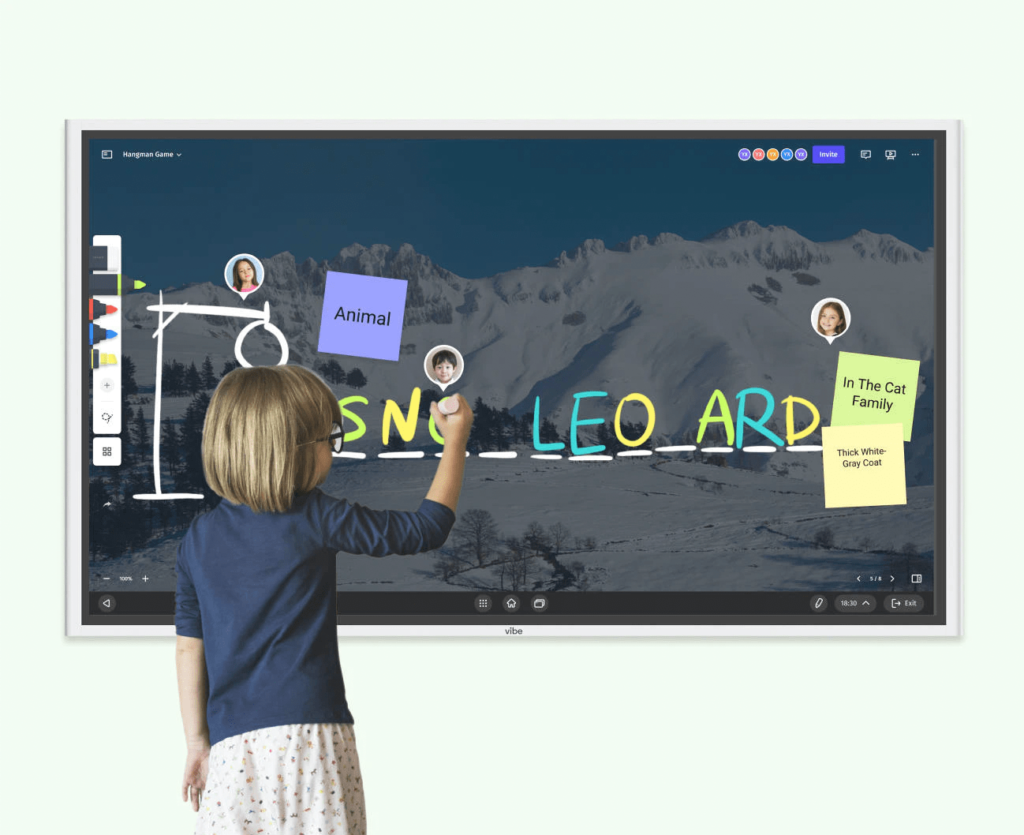One of the greatest challenges for teachers today is creating a classroom environment that motivates students to actively participate in their education. However, that motivation can be hard to come by when using conventional student learning strategies. That’s why active learning strategies are essential for the modern day classroom.
In more conventional forms of instruction students are passive absorbers of information given to them by an instructor. In contrast, active learning is built around the expectation that every single student will participate in the learning process.
Active learning techniques place students at the center of the learning process, helping them feel inspired, connected, and energized in the classroom.
{{< blog/cta-download-new content=”Future of Learning” extra=”false” pdf=”https://vibe.us/pdf/future-of-hybrid-learning/?utm_campaign=active-learning-strategies-explained&utm_medium=blog&utm_source=blog“>}}
What Does Active Learning Strategy Mean?

Active learning can look like many different things, as it covers a wide range of instructional techniques. These tactics typically entail group work in the classroom but may also have independent tasks and discussions. These instructional strategies range from brief, straightforward exercises like journaling, problem-solving, and partnered conversations, to longer, more involved practices or pedagogical contexts like research papers, role-playing, and organized team-based learning.
The active learning methodology emphasizes the value of experiential learning. It enables pupils to learn facts by themselves and utilize them to address particular issues they come across. Students who engage in active learning can better focus and develop higher-order skills like critical thinking and imagination.
Benefits of Active Learning Strategies

Active learning helps students in numerous ways, from boosting their self-esteem to fostering creativity. Knowing these advantages, students and teachers alike can better comprehend how active learning might support their future prospects.
Here are a few key advantages of active learning in the classroom:
1. Improves Teamwork Abilities
The majority of learning strategies for students are based on cooperation. Students who only learn from tests and individual assignments may not be prepared for today’s more team-oriented professions. With active learning, students can develop the skills necessary for collaboration in the workplace as they work together in small teams.
2. Promotes Taking Risks
Since it’s simple to take notes during class or zone out until the lecture is over, students may initially reject the shift to active learning. Active learning encourages students to step outside of their comfort zones. They will develop self-assurance and self-esteem as they become more at ease discussing their views, justifying their conclusions, and elaborating on one another’s opinions.
3. Necessitates Students Preparation
There were probably classes in college that didn’t take much daily work beyond simply turning up to class. If you sat in the lecture hall’s back rows, the professor probably didn’t notice if you were sleepy or uninterested. And it’s much simpler to tune out now that many classes are offered partially or entirely online. That’s why an active learning environment can be essential today. When everyone’s involved and eager in class, no one is overlooked and students are more motivated to arrive in both mind and body.
4. Boosts Involvement
Active learners are immersed in their studies. They analyze ideas and develop better comprehension when discussing, studying, or solving problems. In Zoom or Google Meet sessions, these students are significantly less likely to multitask.
5. Strengthens Analytical Skills
The capacity to recognize a reliable source or notice a weak argument is becoming much more crucial in our society. By actively engaging with resources and diverse views, active learning moves the emphasis of learning away from passively (and perhaps uncritically) absorbing information. Additionally, when students exchange ideas, they develop stronger reasoning, challenge assumptions, and develop the ability to spot logical fallacies.
Differences Between Active Learning vs Passive Learning

In contrast to active learning, the passive learning approach is centered around the instructor leading the lesson, providing all class materials, and starting class discussions. Students absorb this knowledge while listening and writing notes. The following are some critical distinctions between active and passive learning:
1. Classroom Practices
Passive learning techniques include presenting, slide shows, textbook readings, and instructional videos. Active learning entails more practical methods that let students interpret the material for themselves, such as group conversations, scenarios, and field trips.
2. Information Storage
Since passive learning activities make it easier for students to lose all interest, they often provide worse student achievement than methods for active learning.
3. The Role of the Teacher
Active learning strategies allow teachers to establish a setting where the students can learn for themselves, whereas passive learning methods place the responsibility of teaching solely on the teacher. Passive learning encourages one-way lectures, whereas active learning encourages dynamic discussions.
4. Student Involvement
During passive learning class periods, students aren’t expected to engage in discussions and debates, which makes it hard for the instructor to determine which students comprehend the course content and which who do not. Regardless of whether they’re in subgroups, all students must contribute in an active learning setting.
It’s important to remember that active learning and passive learning are not incompatible. Teachers frequently include an active learning activity to complement a passive teaching strategy (such as a lengthy lecture on the smart whiteboard in the classroom in front of the entire class). For instance, a teacher may give each child a clicker to utilize throughout the session anytime they don’t comprehend a concept.
Examples of Active Learning

If you’re looking to make active learning a part of your school or workplace, you should have a a variety of strategies at the ready to make your case more convincing. Here are examples of active learning approaches and tactics that you may use with your class right now to get you started or give you fresh inspiration.
1. Think Pair Share
Think pair share is a fantastic active learning example to cultivate critical thinking and engage in collaborative work. Offer students a prompt or question, and allow them time to react autonomously by writing down their thoughts. After a specific time, kids bring their answers with a partner and talk about the similarities and distinctions for 5-12 minutes. Eventually, each duo presents their thoughts to the group as a whole to facilitate a dialogue.
2. One Liner Summary
In this activity, ask students to summarize what they’ve learned into one single sentence. Students who employ this learning technique must engage with a speech at a very high level and use higher-order thinking abilities to summarize what they have learned. This could be done towards the completion of a lesson to allow pupils some time to reflect on their education and sharpen their memories.
3. Role-Playing
Children’s confidence can be boosted through role-playing and group learning. In a typical role-playing exercise, students would assume the role of a character in a specific scenario, which would encourage them to solve difficulties using strategies and abilities appropriate to that scenario.
4. Game-Based Learning
Game-based learning is a fantastic approach to using students’ technological capabilities since they’re growing up in a fast-paced digital society. Integrating technology into the classroom by using innovative tools and software engages students and brings lessons to life.
5. A Minute Paper
Similar to the One Liner Summary exercise, Minute Paper is best completed toward the end of a class period. Ask students to reflect on two things they learned today—the most essential and the least obvious. Talk about the topics that pupils didn’t understand in the next lesson to help them better understand. Students are given a chance to actively reflect on what they have learned and offer input on any areas that may need to be covered differently.
6. Problem-Based Instruction
In issue-based learning, students are given a more open-ended problem to solve while working alone and with a group. Students must determine what kinds of research they should undertake and how to best make use of classroom technology to solve their problem. This exercise usually works in group situations and creates individualized education routes.
How Vibe Can Help With Active Learning Strategies

Active learning starts with the student. Students must take the initiative to participate in classroom activities and ultimately engage in hands-on learning. They must work together, develop their existing skills, and foster new ones.
Whether you stick with passive learning or venture into active learning strategies, it’s crucial to keep students engaged. That’s why Vibe created leading-edge interactive whiteboards in the classroom. Vibe Boards make every classroom an immersive and interactive learning experience.

With Vibe Canvas, our online digital whiteboard, students can add their own thoughts, comments, and questions to the board in real-time, whether they’re at the board or on their own personal device. With everything automatically saved in the cloud, saving and sharing presentations, lesson plans, and class notes is easier than ever.
Discover how Vibe Boards can encourage active learning in your classroom here.
FAQs
How many active learning strategies are there?
Active learning comes in many forms, but the most prevalent ones are brainstorming, conversation, instruction, journaling, group work, concentrated listening, developing questions, taking notes, annotation, and role-playing.
How can I improve my active learning skills?
Here are some strategies you can use to learn more actively:
- List the information you already possess
- Ask questions as you read
- Write down the key concepts in your own words
- Summarize what you read
- Tell another person what you’ve learned
- Finish all of the course assignments, not just the readings
Is active learning the same as passive learning?
The focus of active learning is the student, while the focus of passive learning is the teacher. Students that engage in active learning must reflect, debate, dispute, and examine data. Students that engage in passive learning must take in, assimilate, reflect upon, and translate information.
